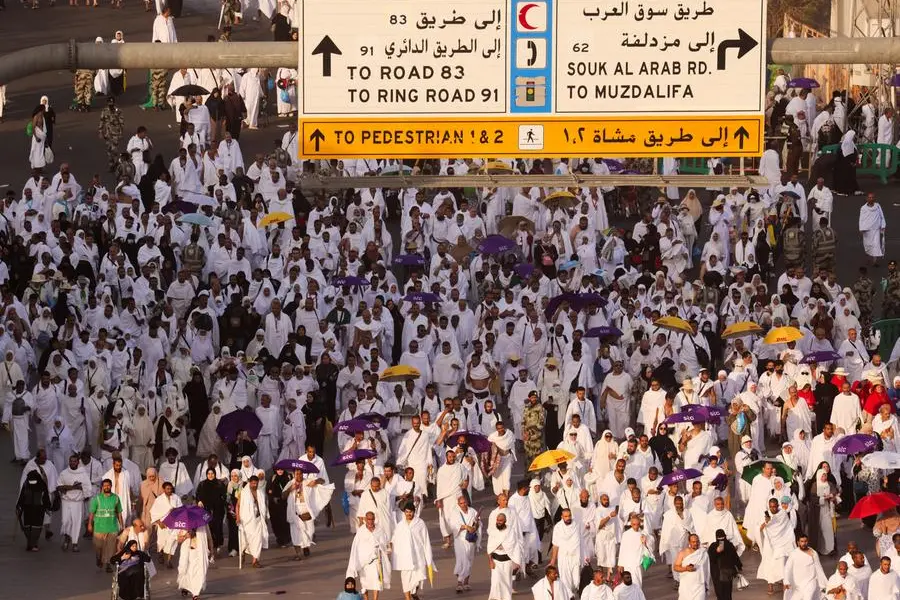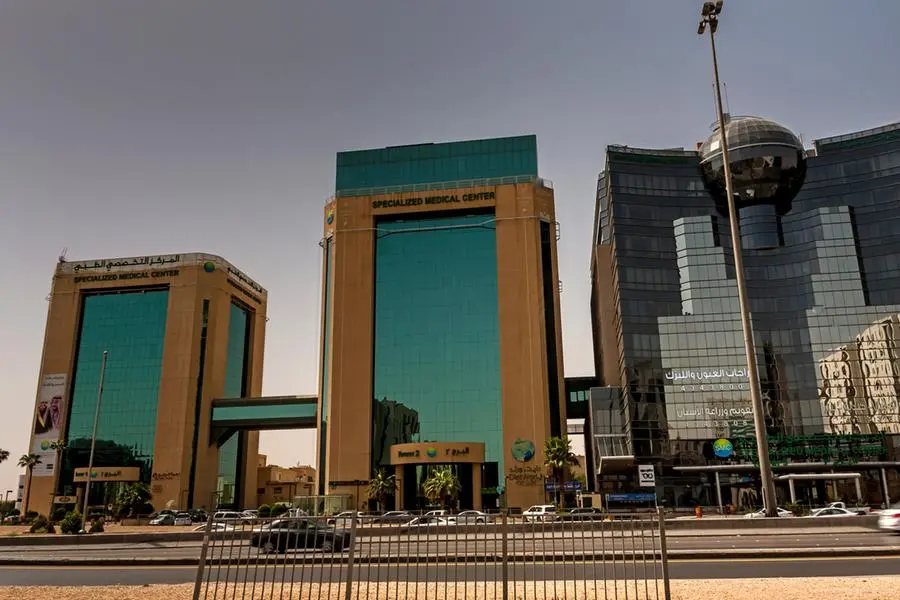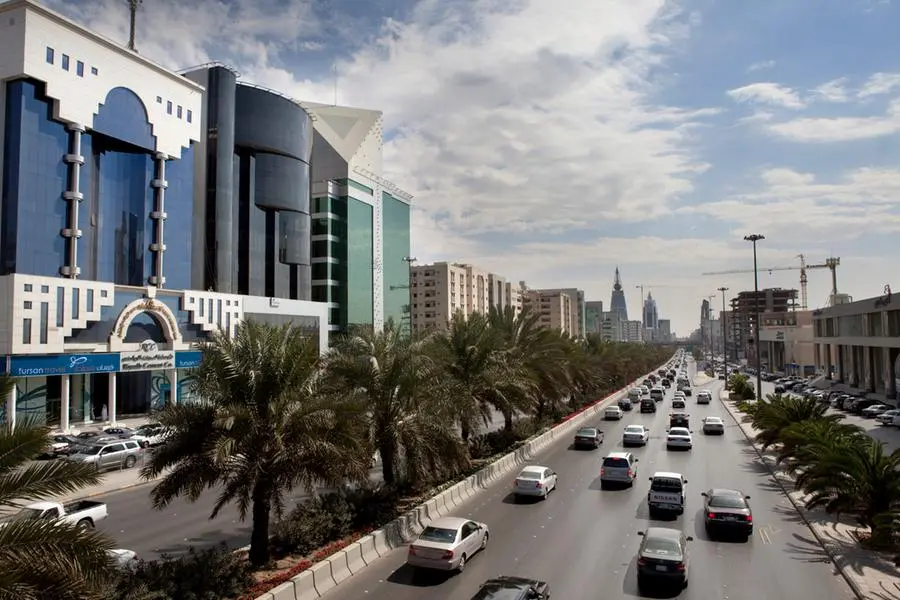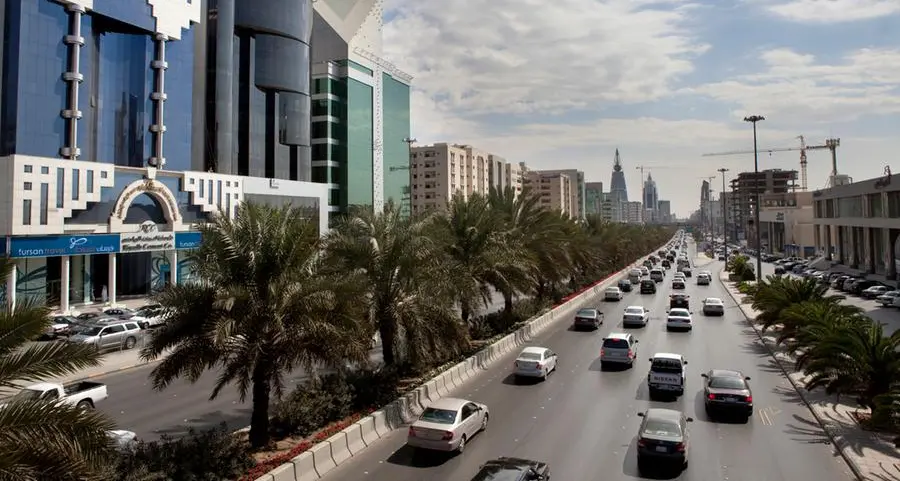PHOTO
Muslim pilgrims walk to gather on the Mount of Mercy at the plain of Arafat during the annual haj pilgrimage, outside the holy city of Mecca, Saudi Arabia, June 27, 2023. REUTERS/Mohamed Abd El Ghany
MINA — Around two million pilgrims, who came from all corners of the globe, converged on the tent city of Mina on Monday, the Day of Tarwiyah, marking the beginning of the annual pilgrimage of Hajj, the fifth pillar of Islam.
The 5-6 day Hajj, one of the largest religious gatherings in the world, has returned to full capacity this year for the first time since the onset of the coronavirus pandemic three years ago. The pilgrims commenced their rituals in an unrestricted spiritual ambiance after lifting of all the pandemic related restrictions and preventive protocols.
Those pilgrims who arrived in Makkah on Sunday performed Tawaf Al-Qudum (Tawaf of Arrival), one of the obligatory rituals of Hajj, before heading for the vast sprawling tent city of Mina. Those pilgrims, who had arrived in Makkah earlier, were engaged in making final preparations before moving into the tent city on Sunday evening as they were not required to perform Tawaf Al-Qudum before setting out to Mina, to commence the lifetime spiritual journey.
As the night wore on Sunday, all roads and highways leading into the vast plains of Mina, located five km east of the Grand Mosque, were filled with pilgrims, who made their way by vehicles or by foot to the holy site where they will camp in one of the largest tent cities in the world on Monday.
Retracing the noble tradition of Prophet Muhammad (peace be upon him), the pilgrims will spend throughout the day and night on Monday, which is known as the Tarwiyah Day, in Mina. On the first day of Haj rituals, they will engage in supplications and making final preparations for the Standing (wuqoof) at Arafat, the most important pillar of Haj, marking the climax of the annual pilgrimage, on Tuesday.
This year’s Hajj will be the biggest since 2019, when about 2.5 million pilgrims took part. Only 10,000 were allowed in 2020, at the height of the coronavirus pandemic, rising to nearly 59,000 in 2021. Last year, less than one million pilgrims performed the pilgrimage. The total number of pilgrims who performed Hajj in 2022 stood at 926,000 and these included 781,000 foreign pilgrims.
More than 1.65 million pilgrims from outside the Kingdom have arrived to perform Hajj this year and they were joined by hundreds of thousands of domestic pilgrims whose exact figures are yet to be made known. The General Directorate of Passports (Jawazat) announced, in a statement on Monday, that 1,655,188 pilgrims came for the current Hajj through all Saudi air, land and sea ports, until the end of Saturday, Dhu al-Hijjah 6 (June 24).
Among them, there are 4,951 pilgrims of 90 nationalities who came to perform Hajj as the guests of Custodian of the Two Holy Mosques King Salman. These include 2,000 pilgrims from the Saudi and Yemeni families of those who martyred in the Decisive Storm military operation in Yemen. Another 1000 pilgrims, who belong to family members of the Palestinian martyrs and prisoners and wounded Palestinians, arrived to perform Hajj at the expense of the King.
Foolproof security arrangements
The Saudi authorities and Hajj missions of various countries have completed elaborate preparations and foolproof arrangements that enabled the pilgrims to complete their smooth movement to the tent city of Mina. Minister of Interior and Chairman of the Supreme Hajj Committee Prince Abdulaziz bin Saud bin Naif inspected the readiness of the Hajj security forces. He watched the parade of the security forces participating in this year’s Hajj operation in Makkah.
The parade witnessed security drills that showed the proficiency and skills of the security forces apart from the display of special vehicles and armored vehicles, and security aircraft and copters taking part in the Hajj operation. Minister of the National Guard Prince Abdullah bin Bandar also witnessed the parade of the National Guard forces during which he inspected the readiness of the forces participating in the Hajj security missions.
Ministry of Health warns pilgrims against sunstroke
The Ministry of Health has issued an alert to the pilgrims against heat exhaustion, as this year’s Hajj season witnesses a rise in temperatures, which poses a threat to the health of the pilgrims.
The ministry’s health workers will be on hand to help fend off heatstroke, dehydration and exhaustion in the heat of the summer that recorded temperatures of more than 43 degree Celsius.
The ministry affirmed that the use of an umbrella, drinking plenty of fluids, avoiding exhaustion, and following health instructions and proper behaviors, would protect pilgrims from sunstroke and heat exhaustion. The ministry has allocated 217 beds to receive cases of heatstroke, including 166 beds in the hospitals of the holy sites, and 51 beds in Makkah, while the ministry has provided a large number of water mist fans at the holy sites.
© Copyright 2022 The Saudi Gazette. All Rights Reserved. Provided by SyndiGate Media Inc. (Syndigate.info).





















